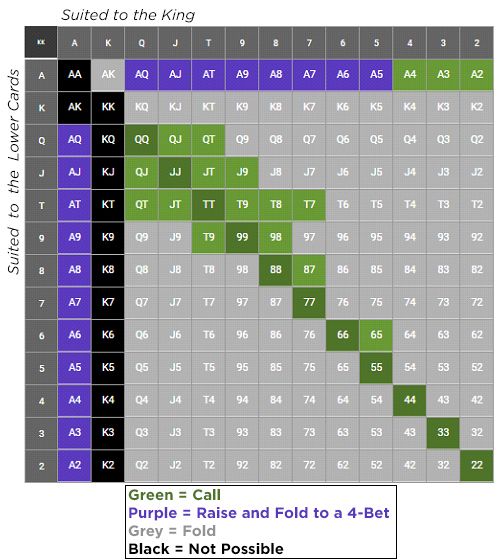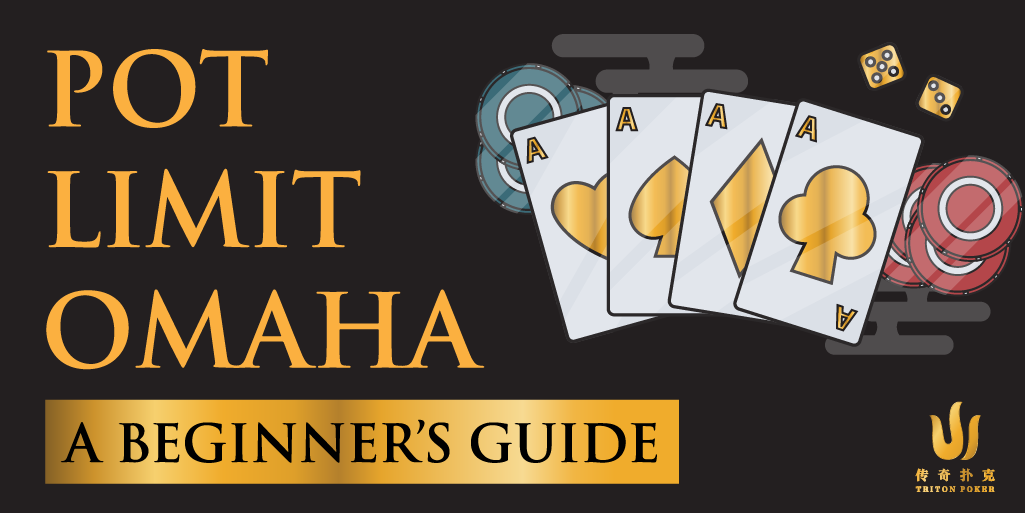Omaha Card Game Strategy
Are you new at poker and want to learn how to play Pot Limit Omaha (PLO)? Or is Texas Holdem your typical game and you want to add to your repretoire? If you are among the latter folks, pay special attention to the tips below because Omaha players are on the lookout for common Texas mistakes.
Below we introduce PLO strategies for starting hand selection and assessment, bankroll management, equity, backdoor outs and kill cards, and hand reading.
Omaha Card Game Strategy
Here’s a little Omaha strategy quiz for you: you’re playing a six handed PLO cash game. The player first to act (under the gun or “UTG”) raises pot, it gets folded around to you in the small blind and you look down and see one of the following hands. Pre-Flop Omaha Strategy in Action. Maintaining a solid starting hand strategy is crucial in PLO, but once you've chosen a suitable hand to play the next thing you need to do is play it as aggressively as possible. In contrast to a conservative post-flop strategy, your approach to playing pre-flop should be confident.

Basic PLO Strategy & Tips
Many players give PLO a try as a refreshing change from Texas Holdem. With 4 hole cards and betting limits fixed by the size of the pot, there are new strategy considerations to keep your mind fresh. This article covers some of the key strategy tips you’ll need to keep in mind when your first move over. Remember that experienced PLO players are on the lookout for people making ‘Holdem Player Mistakes’ and are ready to take advantage.
There are 3 main areas covered in this article. First the setup of starting hands and the importance of betting with combinations of cards that work together. Next you’ll find tips covering the relative strengths of hands at showdown. After that some advice on how to avoid giving away the content of your Omaha hand too early.
Greg: Well, in four-card Omaha Hi/Lo, you are looking to play hands that play for the entire pot. That means playing for the low as well. That means playing for the low as well. You’re premium hands in Omaha 8 look like your Ace-2-3-4s, your hands that contain an Ace-Deuce and another wheel card and then a Broadway card, something like that. Omaha is very often played in such a way that the pot is split between the players with the highest and lowest hands. Since a low hand has to have no card higher than 8 to win its share of the pot, the game is called Omaha High-Low Eight or Better or Omaha/8 for short. 5 Card PLO is the perfect game for those players who want to get as far away as possible from bots and play-by-numbers nits with hand charts. The addition of just a single card to all starting hands leads to an increase in complexity which means that 5 Card PLO Strategy is not susceptible to analysis using simplistic, brute-force solver designs.
Pot Limit Omaha Strategy Tips – Starting Hand Selection
In PLO poker, a showdown has very specific rules. You can use 2 and only 2 cards from you own 4 hole-cards, and 3 and only 3 cards from the 5 community cards. Reading the board comes easily with practice, though the effect on starting hand selection is more subtle.
The best Omaha hands are those which have the largest possible number of 2-card combinations which work together – in addition to some high card strength. The best hands are A-A-J-10 with 2 ace high suited pairs, and A-A-K-K also double-suited. Both of these can make top set, straights and nut flushes. Other super-strong hands in PLO are called ‘Rundowns’ and include hands like 9-10-J-Q double suited. Here you have 6 combinations of hands working for you and you can flop draws with up to 21 outs – making you a favorite over a set.
Even one unconnected card halves the number of combinations you have working for you. The really dangerous Omaha starting hands contain small to medium pairs. Sure, you can flop a set now and again, but when the betting gets extra heavy in this game – middle or bottom set is a trap hand. If you are not already beaten by a higher set then you could be facing one or more massive draws which are favorite to beat you.
Pot Limit Omaha Strategy Tips- Relative Hand Strength At Showdown
Hands shown down in PLO are much stronger than you will be used to in Texas Holdem. If you think that each player starts with up to 6 potential 2-card combinations, then it makes sense that hands shown down will be close to the nuts. Just imagine betting into 3 players in Texas Holdem holding 18 hands – one of them must have hit the flop.
If you can get your aces all-in pre-flop then you should do that, however unimproved over-pairs are very unlikely to win the pot when there has been significant action.
Coordinated flops mean you need to make a decision on whether to continue immediately. The betting gets exponentially bigger on each round with pot-limit rules and ‘just calling to see what happens’ can lead you to hit a low straight, non-nut flush or two pair – which will cost you money more often than they make you any.
A good rule of thumb for new players is to only draw to nut hands. The highest straights, nut flushes and the best full-house should all be included. Once you get used to how different opponents are betting in different situations you can add in some non-nut draws like the underfull or King-high flushes.
Pot-Limit Omaha Strategy Tips – Don’t Give Away That Hand Too Early
A common mistake new Omaha players make is to limp or call pre-flop with a wide range of speculative hands – and then suddenly raise with a pair of aces or kings. This is so well known among regular players that many specifically watch for these raises. What you will find is that you instantly end up with 5 callers, and are quickly checked to on the flop.
If you did not improve on the flop you need to be wary, your opponents will know what you have (well, half of your hand at least) and will be ready to build a big pot if they have you beaten. Once you gain some PLO experience of your own you can join in the profitable pastime of watching for aces-only raisers.
Even players who raise a wider range of coordinated hands can fall into this trap sometimes. This happens when only aces are used to re-raise. If you are going to give away your hand in this way you need to make sure that you have no more than one pot-sized bet left after the flop – otherwise it is easily exploitable by observant opponents.
Omaha is a fantastic game and has developed a loyal following online. These tips should keep you from losing too many easy chips while you learn to beat the game.
Advanced PLO Strategy
Once you have learned the basics of starting hand selection, drawing to the nuts and pot-limit betting – you are ready to add some advanced strategies to your PLO armory. This article covers a range of tactics that will help you increase your win-rate in lower buy-in Omaha hi games online.
First you’ll find out how to spot situations where a combination of your current equity and ‘backdoor outs’ make it profitable to call when you are not favorite to win the hand. Next some notes on reading your opponent’s hands. After this I have covered how to distinguish hands which do better heads up from hands which perform well multi-way. Finally some notes on good bankroll management, which is a key skill in the high-variance game of pot-limit Omaha.
Equity, Backdoor Outs and Kill Cards
In Pot-Limit Omaha there are many situations where the pot has gotten so large that you have an easy call with a hand which is likely behind. This is not just for the mega-draws like wrap + flush draw hands, it can be for a simple flush with the pot offering you compelling odds.

What many new players miss is that there is often extra equity from backdoor draws. For example with a flush draw + top-pair hand, you will have chances of trips or even a runner-runner full-house, you may also have straight possibilities. These extras can often add the few percentage points to your equity, which make a fold into a call.
Conversely, there are often cards in the deck which are not clean outs. For example in a classic flush draw against set all-in on the flop, the set has outs to make a full house (7 on the turn and 10 on the river) which effectively kill your flush. Being outdrawn by a flush when you hold the nut straight has the additional risk of higher straight cards appearing as well as the board pairing.
Omaha Card Game Strategy Tactics
You’ll need to spend some time with an Omaha poker calculator to get used to these kind of match-ups.
Hand Reading in PLO
In my article on Basic PLO Strategy Tips, I outlined how people who raise (or 3-bet) only with hands containing aces will find themselves in trouble in PLO games. There are several more ways you can learn to read the hands of your opponents in Omaha.
Key here is to start with the shape and strength of your opponents hands. You can often find bet sizing tells will give you a clue starting before the flop. For example, some players will only ever re-raise premium hands and will be more likely to raise pair or high card hands and instead call with their rundown hands.
After the flop some players will bet out every time they have a draw, while others will check and call with non-nut (though still strong) draws. With careful observation you can easily pick up patterns. If you are not used to this I recommend you start by focusing on how different opponent play their Aces hands – followed by double suited run-downs. Once you figure whether someone is drawing or ‘protecting’ a made hand from the bet sizing, your decision making process becomes significantly easier.

Multi-Way and Heads-Up Hands
Some Omaha hands perform better in multi-way pots, while others are at their strongest when heads-up. Examples of multi-way hands include the higher rundown hands, preferably double suited. If you hold a high pair with little in the way of coordinated backup then you will ideally find yourself heads-up and with the initiative in the betting. If you miss the flop and face resistance, then high pair hands should usually be ditched.
Omaha Card Game Strategy War Games
Simply deciding whether your hand would prefer to be heads-up or multi-way can help you choose a good pre-flop betting strategy. Make sure that you mix things up sometimes though – or observant opponents will know what type of hand you are holding from your betting style.

Omaha Card Game Strategy Play
PLO Bankroll Management
Omaha Strategy Poker
PLO is a high-variance game. You can play great and find yourself missing big draws, having your big sets cracked and find your bankroll going down fast. Of course, this will be balanced by times when you run great too!
6 Card Omaha Strategy
In Texas Holdem, the agreed safe bankroll level is 20x your buy-in, so you only have 5% of your bankroll in any one game. In PLO I recommend that you play a little more conservatively with your bankroll, instead opting for 3% on any single table or 30 buy-ins minimum. This will mean you can ride the variance which is natural in this game without having to worry about your entire bankroll disappearing.